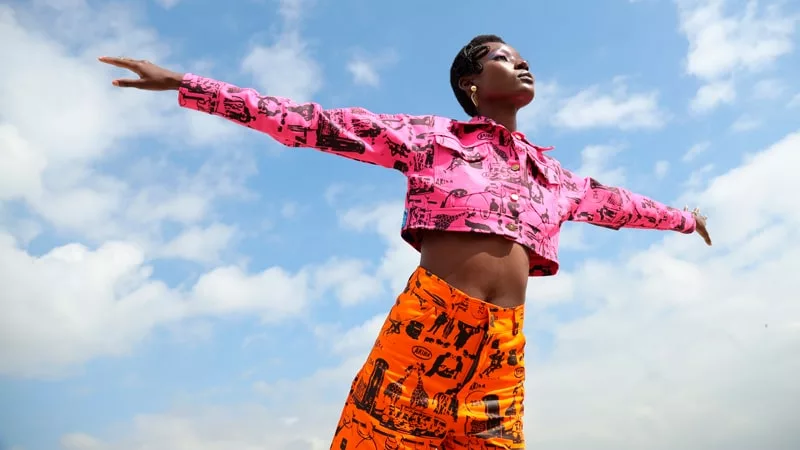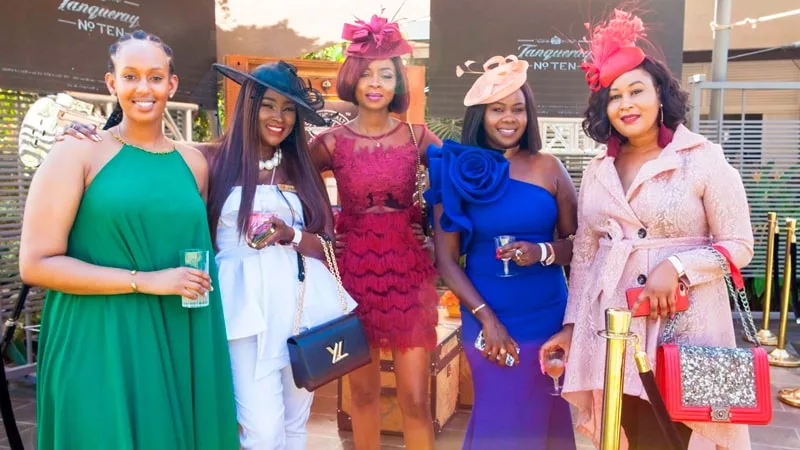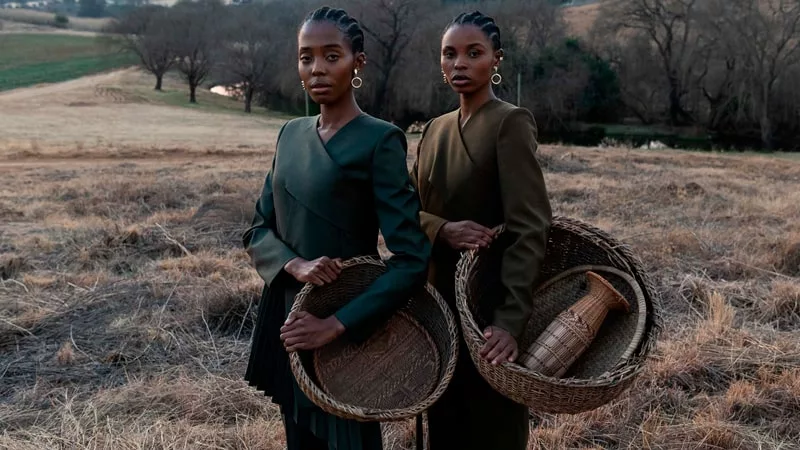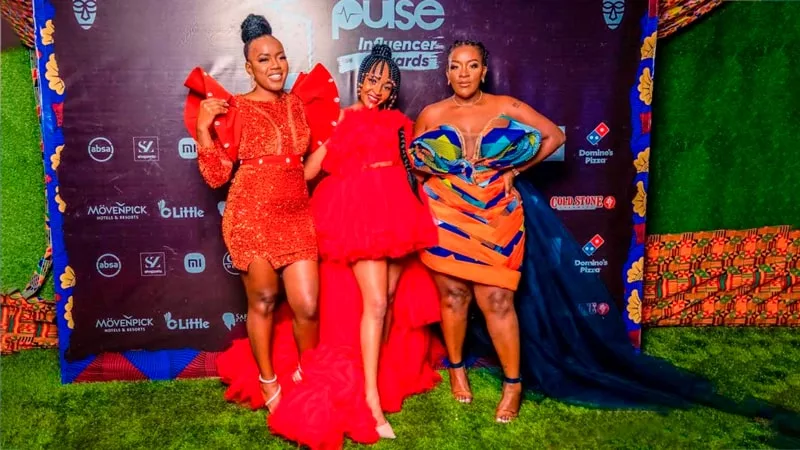With a long history that dates back to antiquity, African textiles have cultural importance and serve as a means of communication. They feature a variety of designs and materials and come from various origins.
Due to the demand for their vivid colors and distinctive cultural expressions, traditional African textiles are currently undergoing a rebirth.
Traditional African textiles have been made, woven, and embroidered with artistic skill since the dawn of human civilization.
These textiles represent the diverse fabric of the African continent and serve as historical documents.
African weavers and artists have been creating clothing for more than a millennium. They come from 54 countries and more than 3,000 ethnic groupings.
This type of fabric can be used to honor a particular person, remember a special moment, or even convey a political stance.
Textiles have been used to transmit important cultural knowledge in addition to being frequently at the center of festivities and events.
History of African Fabric
Ancient Egypt, where flax was woven into linen, is where the origins of African fabric production may be traced back to 5000 BC. With the production of textile-related raw materials such as tree bark, animal hides, cotton, palm, jute, flax, and silk, North Africa’s textile industry grew rapidly. Before the Dutch and the French brought in Ankara (a type of batik) and Shweshwe (a type of tie-and-dye), Africans utilized mud and texture to make straightforward designs, setting the stage for an African textile revolution.
The Dutch Wax Print also referred to as Ankara, is one of the most well-known African textiles. While occupying Indonesia, the Dutch developed the art of batik, and they also introduced Ankara to West Africa.
Wax prints started being produced in large quantities in facilities across the Netherlands and other regions of Europe. These European-made fabrics, however, were never widely accepted in their intended Asian market because the Javanese valued hand-made genuine goods over machine-made imitations.
The Dutch gave the African nations along their trade routes the materials they possessed at the beginning of the 1800s. At this time, Dutch recruits from Africa started sending gifts of fabric home.
Due in large part to the fact that there was nothing else quite like it, the distinctive, lovely cloth was quickly welcomed by West African countries, and through time, it became an essential component of their own culture.
Despite the fact that we often identify this cloth with Africa, it was not originally made or planned there. Its manufacturing was under Dutch supervision, and the Dutch cleverly redesigned it utilizing African folktales, stories, and rituals described by neighborhood traders and artisans.
Through this reworking, the fabric became a print that eventually developed into an unsaid language. The idea of employing art as a covert means of communication among tribes, nations, and women often discussing taboo subjects was accepted by the Africans.
A visual language was created by the prints, and it permeated all of Africa.
They denoted celebrations and rites of passage, communicated different messages, and portrayed varied emotions.
The Dutch dipped into African culture to make the fabrics come alive and resonate with the people of Sub-Saharan Africa because they understood that authenticity was essential to the appeal of African patterns and textiles (a lesson learned from their unsuccessful attempt to replicate the process for the Asian market).
This led to the fabric’s rapid popularization, and because it linked people to politics, religion, and culture, it gained the name “African Print.”
We may make a lot of cultural similarities by looking at African patterns and textiles. Despite the fact that cotton and silk make up the majority of the base materials, the origins of the fabrics are ultimately determined by the designs.
Origin of African Fabrics
The bold motifs, inventive patterns, and unapologetically vivid color palettes of African fabrics have earned them acclaim around the world. Similar to their Asian counterparts, these fabrics are steeped in rich culture, history, and customs and express the essence of life while bringing vibrancy to daily existence.
Fashion and interior design trends around the world are clearly influenced by African fabrics.
As was already said, the history of the textile business in Africa dates back to 5000 BC, when the ancient Egyptians first started growing flax and weaving it into linen.
A scene of weavers working a horizontal loom is depicted in artwork from the 12th dynasty, which was discovered in the tomb of Khnumhotep (about 2400 BC). Pyramids, artwork, and hieroglyphs all depict cloth-draped Egyptians in great detail.
As evidenced by the statues of the great queen Amanishakheto, pharaoh Piye, and the Meroitic pyramids, even the Egyptians’ southern neighbors, the Nubians, had a thriving textile industry.
Later, as numerous African civilizations rose to prominence, cotton became a common material. Weavers were present in Timbuktu and the Mali empire in the 1300s, according to traveler Ibn Battuta. The boubou, a traditional long garment, became increasingly popular as Islam spread over West Africa.
Africa now has a thriving textile heritage. Mali is the place where the hand-woven Bogolan, often called “mud cloth,” originated. In the past, only royalty could buy versions of Ghana’s national fabric, the kente cloth, which was sewn with gold threads.
According to legend, British explorers were impressed by the splendor of an Ashanti king’s apparel.
Fabric manufactured from tree bark has a long history in Cameroon, with some fabrics made exclusively from obom. Clothing and bags are still made from raffia fibers.
The finest weavers in the nation also create the intricately woven clothing used by West Cameroon’s rulers, which is embellished with beads.
While Pygmies employ bark fabric created from tropical fig trees, people in Chad and the Central African Republic weave cotton strips on horizontal looms using a variety of natural colors.
Some of the most exquisite handmade sculptures, garments, and blankets are made by the Kuba people of the Democratic Republic of the Congo using raffia.
Beautiful, bright quilts and blankets are totally handmade by the Ndebele people of South Africa and Zimbabwe, continuing a historical tradition.
Well-dressed Ndebele ladies would be admired for their grace, color, and presentation.
Popular textiles of Africa
1. Kuba Fabric
The people of the Bakuba kingdom, which was situated along the Kasai River in the contemporary Democratic Republic of Congo, created these textiles from palm fibers.
They were traditionally used for royal clothing and rugs. In the early 20th century, artists like Matisse and Picasso were influenced by the patterns on the cloth.
2. Ase Oke
The Yoruba term for “greetings on the spending of money,” Ase Oke, is the name given to a unique fabric in the Yoruba culture. Men alone weave this fabric on tiny strip looms with silk or cotton-based ingredients. Both Yoruba men and women place a high value on ase oke, which confers both aesthetic appeal and social rank on the wearer and the weaver.
When English lace that had been imported became scarce during World War II, this magnificent fabric, made by Yoruba men in Nigeria, rose to prominence.
To make up for this, delicate lace-like decorations were added to the weaves, which is a characteristic aspect that is frequently displayed in Ase Oke.
Popular Ase Oke styles include:
• Alaari: This is a rich, red Ase Oke, often worn on special occasions.
• Sanyan: This Ase Oke is brown, typically light brown in color, and is a common choice for various events.
• Etu: This dark blue Ase Oke is another popular style regularly adorned by Yoruba people.
3. The Okene Fabric
A sort of woven fabric called the Okene Cloth was developed in the Nigerian community of Okene.
The Okene is regarded as a “prestige” cloth manufactured by Ebira women using huge fixed looms inside their homes, in contrast to the Ebira men who weave on small portable looms outside.
Metallic gold or silver threads are frequently used in contemporary weaves, giving the fabric a lovely gloss.
These fabrics, which are frequently used as headwraps or wraps, elevate the status of the ladies who wear them. Additionally, they enhance the reputation of the dyers and weavers who make them.
4. Kente fabric
Of all African textiles, Kente is undoubtedly the most well-known and intricately woven. Men use a combination of small hand and foot looms to create this fabric. It is customary for members of the Ashanti royal family to don it for formal occasions like’stooling,’ a ceremony that represents ascending to the throne.
When the Ashanti display their spectacular gold jewelry and renowned golden stool at royal celebrations, the brilliant colors and geometric patterns of Kente cloth make the ideal contrast.
A stunning cloth is made by stitching together the long, narrow strips of kente that Ashanti men weave. It was originally woven with silk, especially for the Ashanti nobility.
5. Adire Fabric
Adire is a word that means “tie and dye” in Yoruba. This is a reference to the indigo-dyed textile, one of the most recognizable fabrics in Africa that is typically worn only by women. Adire cloth is made of cotton fabric that resists starch and has a design akin to batik.
The old Adire art form has been actively being revived by the artist Niki Seven.
Early in the 20th century, new methods of resist dyeing appeared, most notably the technique of hand-painting designs on the fabric with a paste made of cassava root before dying. Adire Eleko was the name given to this technique.
The textiles from Adire, which are indigo-dyed and made by Yoruba women in southwest Nigeria employing a variety of resist dyeing techniques, are well-known. Early textiles, like those now made in Mali, were probably hand-spun cotton fabrics that were locally woven with basic knotted designs.
6. Bokolonfini
The fabric made by men in Mali known as “bokolonfini” in the Bambara language is what is referred to as “mud cloth.” The fabric is first immersed in a bark and leaf dye throughout the production process.
Then, using thick mud that is gathered from lake bottoms and is high in iron acetate, a design is painted on.
Innovative patterns are used in modern adaptations of this fabric, which are often made in the colors black, gold, brown, and off-white.
These hues have struck a chord with global audiences, generating a sizable export business that is especially well-liked among interior decorators.
7. Adinkira
A calabash (gourd)’s thick rind was used to make stamps that were used to hand-print the fabric known as adinkira. The wearer is able to “read” the print since each stamp has a meaning associated with a proverb.
It is a royal fabric of the Ashanti people and is frequently worn with ‘Kente’ on special occasions like funerals (particularly when wearing black clothes),’stoolings’ (inaugurations), and other royal ceremonies. Adinkira fabrics have beautiful hand embroidery in numerous colors running throughout each seam.
On the seams of contemporary Adinkira fabrics, machine embroidery is frequently visible.
8. Kanga
Kanga is a vibrant and colorful rectangular piece of fabric often worn by women as a wrap-around skirt or dress. It usually features bold patterns, Swahili proverbs, and messages that convey various meanings and sentiments. Kangas are widely used for everyday wear, special occasions, and even as gifts.
9. Kitenge
Similar to Kanga, Kitenge is a colorful fabric worn by both men and women for various occasions. It is commonly used for dresses, shirts, and head wraps. Kitenge fabrics are known for their intricate designs, often featuring geometric patterns, animals, flowers, and cultural symbols.
10. Maasai Shuka
The Maasai Shuka is a distinctive rectangular cloth traditionally worn by the Maasai people. It’s often seen as a blanket, shawl, or even a garment. The Shuka is known for its bold and bright checkered patterns, typically in shades of red, blue, and black. It holds cultural significance within the Maasai community and is sometimes used as a symbol of identity.
11. Kikoi/Kikoy
The Kikoy is a versatile cloth worn by both men and women. It’s characterized by its striped patterns and fringed ends. Originally from the coastal areas of Kenya, the Kikoy has become popular as beachwear and casual clothing due to its lightweight and comfortable nature.
12. Rendille and Samburu Blankets
These blankets are traditional textiles of the Rendille and Samburu ethnic groups. They are known for their intricate beadwork and vibrant colors. These blankets hold cultural significance and are often used as part of ceremonies, gifts, and clothing accessories.
13. Bogolanfini (Mud Cloth)
While not originally from Kenya, the Bogolanfini or Mud Cloth is also used in some parts of the country. It’s a textile art form associated with the Bambara people of Mali, West Africa. Mud Cloth is made using a process of dyeing with fermented mud and plant-based dyes, resulting in unique and intricate patterns. In Kenya, it might be used for decorative purposes or even clothing.
14. Akamba Kikoys
The Akamba people are known for their colorful and finely woven kikoys, which are used for both clothing and household items. These textiles often feature bright geometric patterns and are known for their durability.
15. Luo Traditional Cloth
The Luo people of western Kenya have their own traditional cloth called “Osuga.” This cloth is often used as a wrap or shawl and is made from locally grown cotton. It features bold designs and is woven using intricate techniques.
16. Bark Cloth
Among some indigenous communities in Kenya, bark cloth is produced by beating the inner bark of certain trees to create a flexible fabric. This traditional technique is practiced by groups like the Bukusu and Taita people.
These traditional textiles not only serve functional purposes but also play an important role in expressing cultural identity, values, and heritage among Kenya’s diverse ethnic groups.
17. Leso
Similar to the kanga, the leso is another piece of cloth often used as a wrap-around garment. It is popular among the Swahili-speaking communities along the coast. Lesos are adorned with various patterns and designs, and they hold cultural significance during ceremonies and celebrations.
18. Akala
This is a traditional textile produced by the Luo community. It’s typically woven from sisal fibers and used to create various items such as bags, mats, and even clothing. Akala weaving is a skill passed down through generations.
19. Isukuti Fabric
The Isukuti people of western Kenya have a distinct style of textile art. Their fabrics often feature geometric patterns and bright colors.
These textiles are used for various purposes, from clothing to home decor.
20: Chitenje
Although more common in neighboring countries like Malawi and Zambia, the chitenje is sometimes used in Kenya as well. It’s a versatile rectangular piece of cloth often worn as a wrap, dress, or headscarf.
Current Demand of African Traditional Textiles
African textiles, fabrics, and fashions have been globally distributed for centuries through networks of growers, artisans, and merchants, leveraging fibers like cotton, as well as the bark and leaves of various plants and the colour dyes derived from them. Traditional African textiles, produced from natural fibers like cotton, are worn to display status and wealth. On the other hand, technical African textiles are crafted from natural and engineered materials for specific purposes, such as insulation, conductivity, or fire resistance.
Cotton is one of the most important fibers used in African textiles, serving as a significant crop for domestic consumption and a crucial export for several countries. Both organic and genetically modified forms of cotton are cultivated on the continent.
The current generation of designers is embracing digital, 3D, and other technologies to adapt indigenous production methods and handcrafting skills for the fabric and fashion emerging from Africa. African clothing flourishes in urban markets across the continent, where woven and commercially created prints are sold side by side, supported by a network of interconnected weavers, buyers, and sellers.
According to Statista, the market volume is predicted to reach $6,182 million by 2027, with revenue expected to grow annually at a rate of 13.23 percent (CAGR 2023–2027).1 A significant market segment is created by e-commerce through distribution channels like online stores. The rise in the African clothing market’s sales is primarily attributable to the expanding middle class in East and Southeast Asia, who use social media and mobile apps for online shopping.
The African clothing market is mainly composed of cotton fibers. Uganda, Benin, Ethiopia, Mali, Egypt, Tanzania, Senegal, Burkina Faso, and South Africa are among the African countries that produce fiber for both domestic use and export, with the majority going to China, India, and the United States. Sub-Saharan Africa ranks fifth in global cotton production, accounting for 7.1 percent of the total. Many nations in Africa are ideally suited for cotton production due to their mild climates.
In 2005, the World Trade Organisation relaxed restrictions, granting African textile manufacturers access to markets in Europe and Asia. As a result, global demand for African fabrics, clothing, and fashion has increased considerably and is expected to remain robust. African garment manufacturers now enjoy improved working conditions, due to lower wages for textile workers in Africa than in Asia and enhanced shipping in countries like Ethiopia.
Ending Note
The prosperity of Africa’s economy hinges significantly on the textile industry. The primary catalysts for the development of Africa’s burgeoning textile sector are foreign investment, investor confidence, and the growth of the fashion industry. Over the last two decades, China has emerged as a significant source of finance for African economies, particularly for Ethiopia’s young yet rapidly expanding manufacturing sector.
The level of engagement from African nation governments remains the primary challenge. Therefore, political will and an enhanced business climate are two factors that would spur increased competition and promote the growth of the industry.
Content courtesy of Fiber 2 Fashion & NFH
Like this:
Like Loading...












